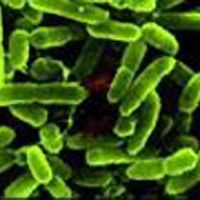Article
Carbon Monoxide Sparks Immune Response to Bacterial Infections
Author(s):
Beth Israel Deaconess Medical Center (BIDMC) investigators had identified Carbon Monoxide (CO) as a viable agent in fighting off bacterial infections.

Beth Israel Deaconess Medical Center (BIDMC) investigators have identified Carbon Monoxide (CO) as a viable agent in fighting off bacterial infections.
Reporting in the November issue of The Journal of Clinical Investigation (JCI), BIDMC researchers found CO, which alerted white cells and microphages that there’s an attack on the body, sparked immune responses.
“Should it confront viable, pathogenic bacteria, CO binds to its respiratory heme complexes, inducing the release of adenosine triphosphate (ATP), a danger signal that activates a lytic response in innate immune cells,” the authors noted.
Specifically, the investigators found when CO encounters bacteria, the bacteria releases ATP, which can be detected by macrophages’ receptors. However, if there is found to be no threat, CO leaves the body.
“We found a unique metabolic interaction between host and microbe and put forth an efficient 2-hit system for the recognition by innate immune cells of metabolically active microbes, presumably acting as the earliest immune response against pathogen invasion,” the investigators wrote.
Associated with toxicity, BIDMC researchers’ discovery opens up the possibility that small doses of CO could be used to complement or even replace antibiotics as a line of treatment, a BIDMC statement pointed out.
“From a clinical perspective, one could envision CO being administered to patients with ongoing infections to help reduce the risk of dangerous complications, such as sepsis, SIRS and, ultimately, multi-organ failure,” the study’s senior author, Leo E. Otterbein, PhD, an investigator in the Division of Transplantation in BIDMC’s Department of Surgery and Associate Professor of Surgery at Harvard Medical School (HMS) said. “Our hope is that we will be able to test these applications in clinical trials and provide the body with a new weapon of mass destruction — one the host employs against invading armies of bacteria.”


